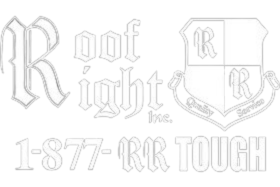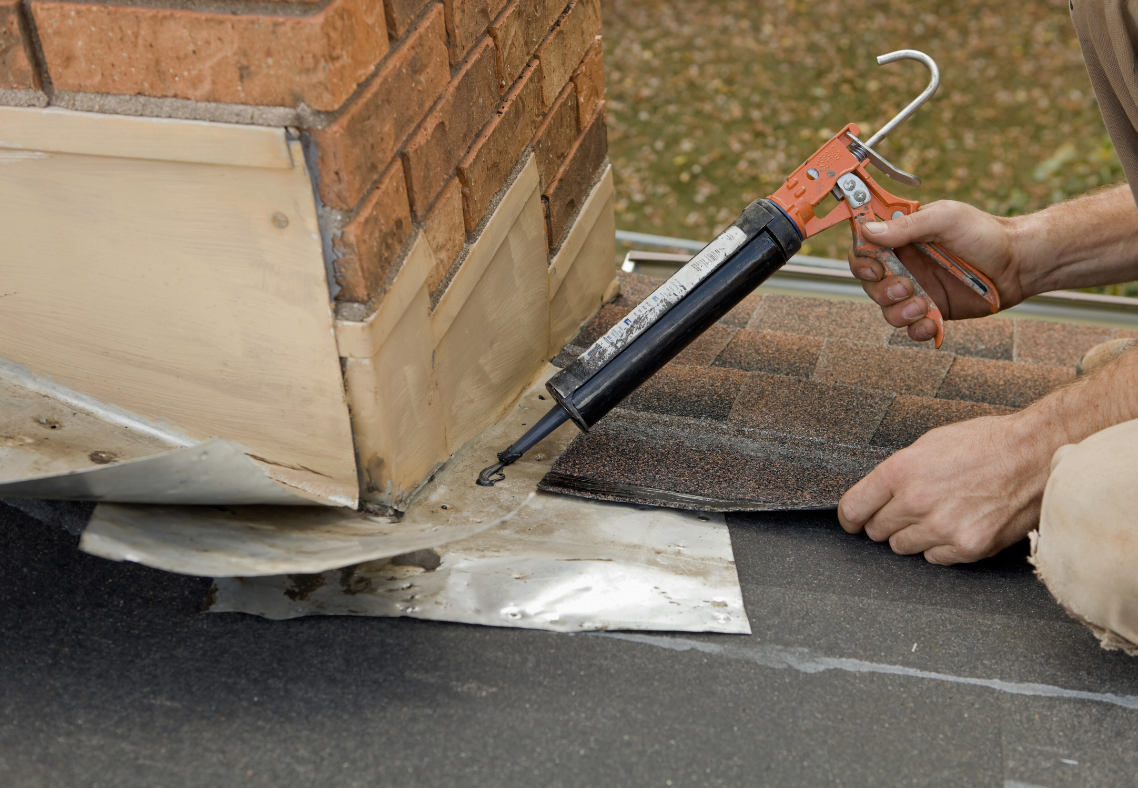What Is A Chimney Cricket And How Does It Protect A Roof?
Roof Right: Exterior Home Remodeling Specialists in Maryland Contact UsSchedule A Free EstimateWhen you inspect the roof of a Maryland home, one of the most critical but often unseen features can be a structure called a chimney cricket (also known as a chimney saddle or diverter). This is a specially built ridge or peaked structure installed on the high side of a chimney, designed to redirect water, snowmelt, and debris away from the vulnerable area behind that chimney where the roof plane meets the masonry. Without a properly installed cricket, persistent water can accumulate behind the chimney, leading to leaks, roofing material degradation, flashing failure and structural damage. In Maryland’s climate with its heavy rain events, freeze‑thaw cycles, snow loads and abundant deciduous tree cover, the need for water management around roof penetrations is especially important. Homes in Hampstead, Carroll County, Baltimore County and throughout Maryland frequently have chimneys that interrupt slope, so without diversion the water will tend to “pond” on the uphill side of the chimney or saturate the flashing and roof deck. A chimney cricket addresses precisely that risk.
Answering The Question: What Is A Chimney Cricket And How Does It Protect A Roof?
How a Chimney Cricket Works
The function of a chimney cricket is fairly straightforward: it provides a sloped “mini‑roof” behind the chimney that forces water to split and flow around the chimney rather than pooling behind it. As water from rain or snowmelt runs down the roof plane, the cricket catches it and guides it to the sides of the chimney where it can continue downward and off the roof.
Without a cricket:
- Water may collect behind the chimney or in the flashing valley, which increases the risk of moisture penetrating the flashing, shingles or deck.
- Ice dams may form in cold weather behind the chimney, since meltwater can refreeze when trapped there.
- Debris like leaves or pine needles accumulate in the stagnant zone, causing rot, mold, or pest entry.
With a properly sized and installed cricket:
- Water is diverted promptly, reducing saturation of the roof edge or chimney base.
- The risk of leaks around the chimney flashing is significantly reduced.
- The lifespan of roofing materials adjacent to the chimney is extended because they are less prone to freeze/thaw damage, pooling and flashing failure.
Why Maryland Homes Benefit from Chimney Crickets
Homes in Maryland face specific roofing challenges that make a chimney cricket a smart investment:
- Heavy and frequent rainfall: Maryland summers and autumns often bring intense storms, which means large volumes of water must be managed by your roof and gutter system. The intersection of the chimney and roof is a hotspot for overflow if unmanaged.
- Snow, ice and freeze/thaw cycles: In Maryland winters, meltwater and ice can accumulate behind chimney bases and freeze overnight. A cricket helps direct this meltwater away so it doesn’t pool and refreeze in damaging ways.
- Tree cover and debris: Many Maryland homes are surrounded by tall trees. Leaves, twigs and pine needles often end up at roof intersections. A cricket helps reduce the stagnant debris zone behind a chimney where leaks often originate.
- Older masonry chimneys and construction: In Maryland neighborhoods with historic homes or older builds, chimneys may have broader profiles or complex flashing. These conditions increase the risk of pooling water and make a cricket especially valuable.
By installing a chimney cricket, a Maryland homeowner is proactively protecting the most vulnerable roof intersection from moisture infiltration and its long‑term consequences.
How a Chimney Cricket is Designed and Installed
A proper chimney cricket is custom‑designed based on your roof’s slope, the width of the chimney, and local building code. Here are key factors involved in design and installation:
- Slope: The cricket’s slope should match or exceed the slope of the main roof so water cannot sit behind the chimney. Some codes demand that the cricket rise to a certain fraction of the chimney width based on roof pitch.
- Width and height: For example, the 2021 IRC (International Residential Code) requires a cricket for chimneys wider than 30 inches in the direction parallel to the ridgeline.
- Materials: Common materials include plywood framing, roofing underlayment, shingles or metal flashing, so the cricket integrates seamlessly with the roof and weather layers.
- Flashing integration: The cricket must be properly flashed at the chimney and roof intersection, and counter‐flashed into the masonry to prevent leaks. If this detailing fails, the cricket loses effectiveness.
- Construction quality: Any gaps, improper fasteners, flashing errors or material mismatches can undermine performance. Ensuring high‑quality installation is therefore important.
Given Maryland’s weather, attention to installation detail is especially crucial. Poorly installed cricket, or one made of inappropriate materials, may fail prematurely.
Signs Your Home May Need a Chimney Cricket or a Replacement
If you are a homeowner in Maryland, here are warning signs that a chimney cricket may need installation or repair:
- Water stains or discoloration on ceilings or walls near the chimney area.
- Moss growth, algae or debris accumulation behind the chimney.
- Ice dams form behind the chimney or along its base during winter.
- Visible pooling water or saturated masonry at the uphill side of the chimney after rain.
- Flashing failure, cracked or missing shingles near the chimney base.
- Previous repairs around the chimney that didn’t hold or recurring leaks in that area.
If you notice any of these conditions, it’s wise to have a roofing professional inspect the chimney‑to‑roof intersection for a cricket, flashing condition and overall drainage path.
Cost, Maintenance & Longevity Considerations for Maryland Homes
Installing a chimney cricket involves additional cost beyond a standard roof or chimney flashing job. Estimates for a simple cricket range from several hundred to over a thousand dollars, depending on size, material and complexity. However, from a Maryland homeowner’s perspective, this cost is often small compared to the damage that can result from leaks around a chimney: rotting roof deck, flashing replacement, interior damage, mold remediation and so on. A cricket helps prevent those costs. Maintenance is relatively minimal. During your regular roof inspection or gutter cleaning visits, your contractor should check:
- Cricket flashing seams for gaps or rust.
- Integration of cricket covering with surrounding shingles or metal.
- Debris accumulation behind the chimney that might block flow.
- Masonry conditions around the chimney that could compromise flashing or cricket performance.
Given Maryland’s conditions, a check every year or at least with every major storm season is a good practice.
Contact Roof Right For Chimney Cricket Installations In Maryland
If you live in Maryland and want to ensure your chimney and roof remain protected from water infiltration, contact Roof Right for a chimney cricket installations in Maryland. Our team in Hampstead is experienced with chimney crickets, flashing, roof drainage and the specifics of Maryland’s climate. We will inspect your chimney intersection, measure for the proper cricket size and slope, recommend suitable materials, and provide a detailed estimate with clear scope and quality assurances. Whether your home has experienced leaks, you’re installing a new roof, or you simply want to upgrade the drainage around your chimney, we’re ready to help. Reach out today and let Roof Right install a cricket that keeps your roof sound, dry and reliable for years to come.
Areas We Serve
If you're looking for a roof contractor in Maryland, give Roof Right a call today at (410)-374-5923 to schedule an appointment!
Carroll County
Howard County
Clarksville, Columbia, Elkridge, Ellicott City, Fulton, Jessup, Laurel, Woodstock
Montgomery County
Baltimore County
Baldwin, Bradshaw, Carney, Cockeysville, Glen Arm, Hunt Valley, Jacksonville, Kingsville, Lutherville, Nottingham, Overlea, Owings Mills, Parkton, Parkville, Perry Hall, Phoenix, Pikesville, Reisterstown, Sparks, Timonium, Towson, White Marsh

